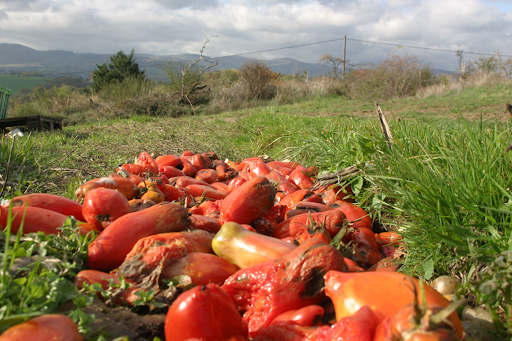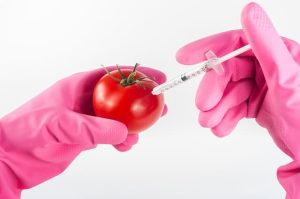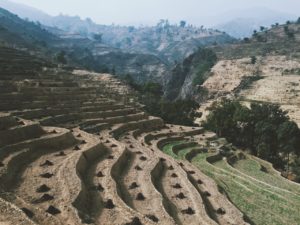Introduction
Almost half of all cultivated products are lost before reaching the consumption stage. This rate is higher in developing and underdeveloped countries. The moisture loss, bruising and subsequent decay are leading to degradation and disposal of fresh fruits and vegetables. Processing, storage and transport conditions determine these deteriorative reactions. Knowing where the losses occurred in the supply chain is important.
Causes of post-harvest losses of fruits and vegetables
a. Harvesting
Size, shape, solidity, fruit opening, juice content, textural properties, color, nutrient composition such as sugar, starch, oil, dry matter content, soluble solids and titratable acidity are important maturity indices for fruits and vegetables.
Harvested immature crops are more susceptible to mechanical damage and may have poor qualities such as high acidity and low sugar through ripening. Overripe fruits have a low shelf life. Exposure to more than one treatment, lack of storage containers during/ after harvest leads to damage. Incorrect cultural practices applied in frost, hail, drought, excessive rainfall, physiological disorders, plant nutrition, plant protection, irrigation, fertilization, and pruning in the pre-harvest period cause fruit and vegetable losses. During the harvesting period incorrect estimation of harvesting time, failure to apply pre-cooling to fruits like cherries cause losses (4-12%).
b. Storage
A cold chain is a continuous supply of a product with thermal and refrigerated packaging methods from production to consumption. It starts with pre-cooling and continues with cold storage, cold transport and refrigerated display cases. After cleaning, sorting and packaging of products, it is necessary to store them in periods ranging from few hours to few months.
c. Transportation
Transportation places certain period of time between production and consumption. In developed countries, delivery of perishable goods with refrigerated vehicles is standard practice. In developing countries, lack of appropriate transportation and inefficient logistics are major challenges.
d. Improper packaging
Farmers sell produce at retail level unpackaged or tied in bundles. This cannot prevent moisture loss and reduces the shelf life of fresh produce. Cheap and low quality packaging materials, containers cannot protect the fresh produce from damages adequately.
e. Consumer’s waste
Fruits and vegetables contribute to almost 50% of food wasted by households. Over and unplanned purchase, poor home – storage management are the reasons. In developed countries consumer behaviour, quality standard requirements and strict safety policies are related. Magnitude of waste depends also on socio – cultural factors such as gender, lifestyle and income.
Ways to reduce post-harvest losses
a. Harvesting factors
Setting harvest time, standardizing techniques of manual and mechanical harvesting, selection of proper harvesting tools are important factors. Methods such as; hydro cooling, room cooling, forced air cooling, serpentine forced air cooling can be used for cooling. Picking baskets, sacks, carts and buckets made of plastic, wood, natural/ synthetic fibers can be used as harvesting containers.
b. Storage and transportation practices
Transportation of fresh fruit and vegetables is determined by distance, perishability and the value of the product. Factors such as initial quality, environmental humidity, water loss, atmospheric gas concentration, mixed loads, physical injury, chemical damage, microbial contamination affect product quality. The principles of transport are careful loading/ unloading, transition as short as possible, avoiding stoppage of transport vehicles under sun or rain, protection of produce with cover.
Storage slows down ageing due to respiration, moisture loss and disease decay. Storage structures should be kept cool (refrigerated/ at least ventilated and shaded) and produce put into storage must be of high initial quality. Controlled Atmosphere Storage (CAS), Zero energy cool chambers (ZECC) are systems used for storage.
c. Packaging selection
Fresh fruits and vegetable shelf life ranges from a few hours to a few weeks. They are living organisms and continue their physiological activities even after harvest. They equilibrate humidity as high as 98%. Thus, rapid transpiration causes shrinkage of cells under dry conditions. Packaging of produce depends upon physical, anatomical and physiological characteristics (transpiration, respiration and ethylene production).
| Possible reasons for fresh fruits and vegetable losses | Potential packaging solutions |
| Bruising due to compression of overfilled packages | Use of shallow and smooth surface containers Decrease in weight of produce in containers |
| Vibration injury (roller bruising) | Optimizing transport packaging for shipping Use of restrainers, individual wrapping and cushioning |
| Impact injury | Use of rigid containers with individual cushioning |
| Puncturing injury | Use of rigid containers with proper grips, smooth containers and handling equipment |
| Water loss/ wilting | Modified atmosphere packaging (MAP) and active packaging |
| Microbial growth | Modified atmosphere packaging (MAP)and irradiation |
| Inadequate ventilation | Use of packaging materials allowing respiration |
| Excessive purchase | Introducing smaller consumer packaging in the markets |
Conclusion
In developing countries, causes of post – harvest losses are lack of infrastructure (poor harvesting, transportation, storage and processing technologies) while in developed countries is lack of consumer awareness. Post-harvest innovations and technologies, management of post-harvest stages is necessary to reduce post-harvest losses.
Reference
Elik, A., Koçak Yanık, D., İstanbullu, Y., Aysar, N., Yavuz, A. & Gögüs, F. (2019). Strategies to Reduce Post-Harvest Losses for Fruits and Vegetables. International Journal of Scientific and Technological Research, 5(3), 29-39. doi: 10.7176/JSTR/5-3-04








